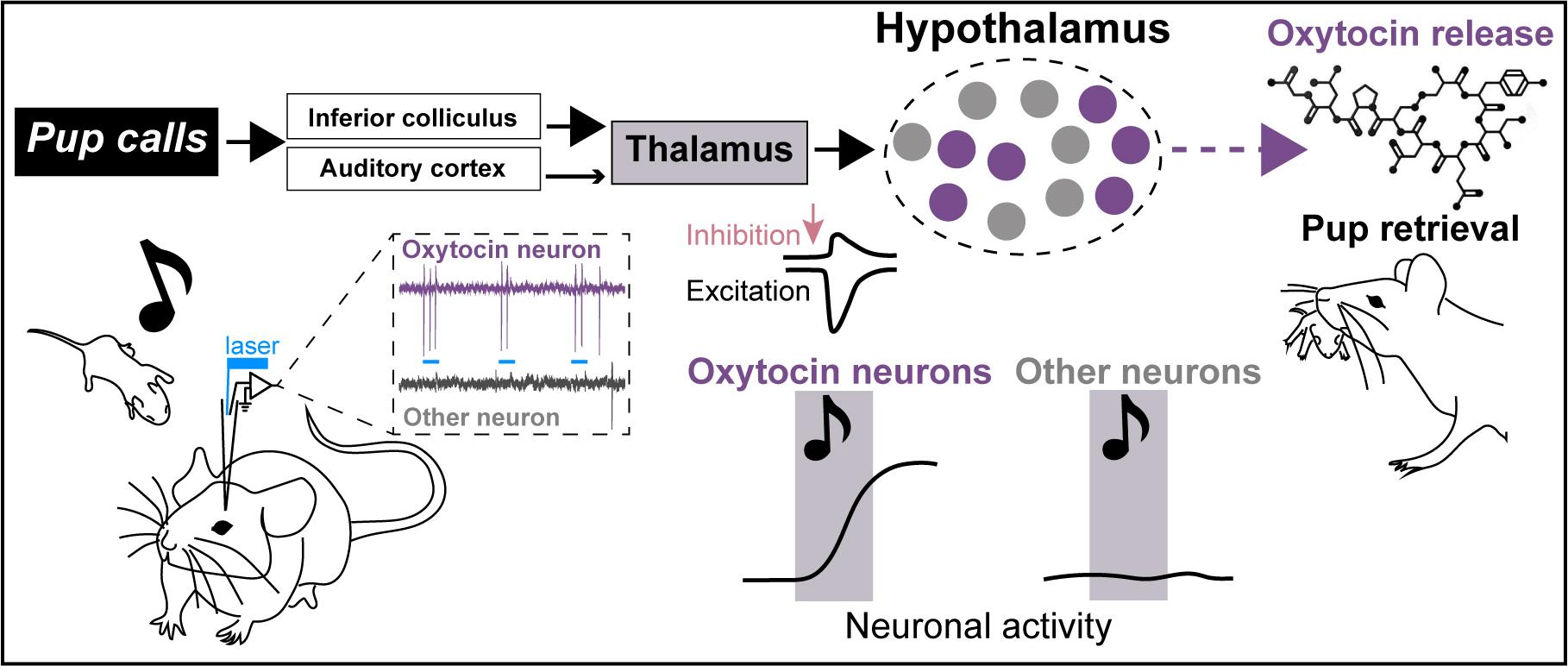Abstract:
Mammalian babies are “sensory traps” for parents. Various sensory cues from the newborn are tremendously efficient in triggering parental responses in caregivers. We recently showed that core aspects of maternal behavior such as pup retrieval in response to infant vocalizations rely on active learning of auditory cues from pups facilitated by the neurohormone oxytocin (OT) (Schiavo et al., Nature, accepted). Release of OT from the hypothalamus, triggered by infant cues, might thus increase the salience of socially-relevant information and promote maternal behaviors. However, it remains unexplored what sensory cues can activate OT neurons.
In this talk, I will present recent data showing that hypothalamic OT neurons in maternal mice (dams) can respond to auditory cues from newborns and subsequently release OT in target areas. By performing in vivo whole-cell and cell-attached recordings from optically-identified OT neurons in awake dams, I found that OT neurons, but not other hypothalamic cells, increased their firing rate after playback of pup distress vocalizations. Using anatomical tracing and channelrhodopsin-assisted circuit mapping, I identified the projections and brain areas (including the posterior intralaminar thalamus) relaying auditory information to OT neurons. In hypothalamic brain slices, I found that optogenetic activation of thalamic fibers led to long-term depression of synaptic inhibition in OT neurons mediated by postsynaptic internalization of GABAARs. Therefore, persistent activation of OT neurons following pup calls in vivo is likely mediated by disinhibition. Using a genetically-encoded OT sensor, I demonstrated that pup calls were efficient in triggering OT release in downstream motivational areas such as the ventral tegmentum.
Finally, when thalamic projections to hypothalamus were inhibited with chemogenetics, dams exhibited longer latencies to retrieve crying pups. These findings suggest that the thalamus-hypothalamus noncanonical auditory pathway may be a specific circuit for the detection of social sounds, important for disinhibiting OT neurons, gating OT release in downstream brain areas, and speeding up maternal behavior.

Biography:
Silvana Valtcheva, Ph.D. is a postdoctoral fellow in the laboratory of Robert Froemke at New York University, working on hypothalamic circuits and maternal behavior. Silvana grew up in post-communist Bulgaria and in 2007 moved to Paris where she earned her Bachelor’s degree in Biology and a Master’s degree in Neuroscience from Pierre and Marie Curie University. Supported by grants from the French Ministry of Higher Education and Research and Ecole Normale Superieure, Silvana did her graduate work with Dr. Laurent Venance at College de France in Paris, where she studied how astrocytes control spike-timing-dependent plasticity in the striatum. After completing her Ph.D., Silvana received a postdoctoral fellowship from the Fyssen Foundation and in 2017 joined the laboratory of Dr. Robert Froemke at NYU, focusing on the synaptic mechanisms and neural circuits important for maternal behavior in mice. She is specifically interested in how naturally-driven forms of synaptic plasticity prime the maternal brain to respond to sensory cues from infants. Her research is supported by the Leon Levy Foundation and the NARSAD Young Investigator Award.
Click here to register via Eventbrite
